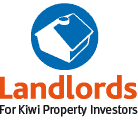Small apartment development
Question from jess updated on 11th April 2020:
I’m lucky enough to be able to develop the section my family home is on. I have invested for years. However, this is likely to be my biggest project to date and I quite honestly don’t know where to begin. I’ve been told by a house building company that we could get up to 10 of their terraced town houses on to it. However, I’m curious as to whether we could build apartments and, if so, are they cheaper to build or could we get more on? Also, what companies build smallish apartment blocks in Auckland? Can you recommend anything I could read or do I just start with council? Thanks for any help you can give.
Our expert Matthew Gilligan responded:

You certainly have an exciting project ahead of you. I’ll assume you have a THAB (terrace housing and apartment buildings) zoned property in Auckland since you ask about apartment builders in Auckland. However, even if that is incorrect, the following advice is still largely applicable. Simply speaking, the smaller each dwelling is (e.g. an apartment versus a terraced house), the more should fit onto a given site – especially as apartments are stacked on top of each other. But, the more dwellings you have the site, the higher the square metre build cost is.
There are a great number of factors that influence how many dwellings you can develop on a site. There are more obvious limitations such as zoning restrictions, property size and property shape, but also many other less obvious limitations. These can include steepness, vehicle access, location and capacity of stormwater and wastewater services, road traffic volumes, minimum dwelling size and parking requirements, shading of neighbours and so on, and so on. Working out how many dwellings you can build on a site can be a complex process involving an experienced architect or architectural designer, surveyor, planning consultant, and various engineers such as civil, structural, traffic and geotechnical.
For any development, and particularly a more complex one such as multiple terraced houses or an apartment block, it is sensible to start by talking with an experienced local planning consultant in private practice. They would provide important initial advice and then work with your architect or designer in preparing one or more initial viable development concepts. The THAB zone allows for apartment buildings of five to seven storeys, but this may be further limited by restrictions arising from neighbouring property zones, for example. While the zone may allow for such intensive development, you need to consider if the location is ready. For instance, a suburban area with THAB zoning may not yet be suitable for such development if there are no employment or transport hubs in the vicinity. Be careful not to build something that fails to appeal to buyers or tenants.
Small apartment buildings are likely to be built by a building company that is already involved in smaller scale commercial construction or apartment building. An online search should reveal a number of options. However, by the time you are ready to put construction out to tender you would have connected with a number of consultants (planner, surveyor, architect, structural engineer, civil engineer, quantity surveyor etc.) who would be able to provide contractor or builder recommendations.
Another essential consideration is whether your selected option is one that is reasonably expected to result in desirable financial outcomes, be that development to sell or development to retain as residential investment for occupation by tenants, or a combination of both. It would be pointless, or worse, to take all the associated risk and incur development expenses and stress for little or no resulting benefit. You want to satisfy yourself that the effort provides sufficient return, whether from sales or incoming rent.
A good approach to take is to first establish if there are any obvious obstacles to developing your site, for example the area may lack stormwater network infrastructure. If there are no impediments, you then produce several possible varying initial concepts for the site. These concepts can then be costed to produce initial estimated financial outcomes. It becomes immediately obvious if a particular concept is reasonably expected to be a winner, or possibly impractical for you to proceed with if the costs involved are beyond your capacity to fund.
Which brings me to a final point. It is wise to engage with a competent loan broker early on. Unless you have cash resources with which to complete your development, you will require funding to some extent. Your primary development limitation may be a financial one, dictating how large or small a development you can practically complete. If you are new to all this, I suggest you employ an expert to assist you through the process.
If you’d like help with working out the best option for your site, you are welcome to contact us at GRA – we have a team that is dedicated to doing option analysis, and providing support through the development process. Ph +64 9 522 7955 or info@gra.co.nz.
Matthew heads GRA's specialist property and asset planning division. He helps clients create optimal tax structures and build wealth through property. He has an extensive buy-to-hold property portfolio, is currently involved in over a dozen developments, and is author of two books - Property 101 and Tax Structures 101.Search the Ask an Expert archive
Browse all questions in the Ask An Expert Archive »
